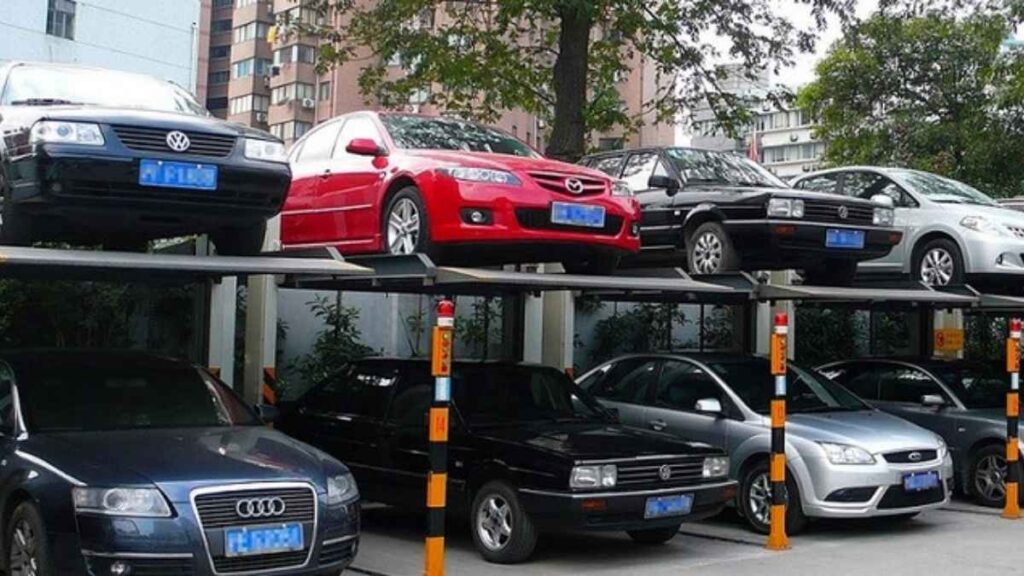Introduction to Parking Lifts
Parking in urban environments is a perennial challenge, often frustrating drivers and urban planners. With the rise of urbanization, the need for efficient parking solutions is more pronounced than ever. These devices empower metropolitan areas to accommodate more vehicles in a footprint that traditionally housed far fewer cars, addressing significant parking challenges.
Parking lifts are mechanical devices designed to stack vehicles vertically, allowing multiple cars to occupy the same footprint that would traditionally accommodate a single vehicle. They are particularly advantageous in densely populated areas with scarce and expensive land. As cities expand vertically in terms of buildings, adopting similar vertical parking solutions makes perfect sense, helping to preserve the urban landscape and minimize land usage.
The Growing Demand for Space
The rapid pace of urbanization has intensified the demand for parking spaces. According to UN data, nearly 55% of the world’s population now lives in urban areas, which is expected to increase to 68% by 2050. Cities continuously expand, yet the available parking space needs to be developed. This growing scarcity makes innovative solutions like parking lifts attractive and necessary for urban growth. By embracing technology, urban planners can mitigate the space crunch, providing solutions that align with future demands while addressing current logistical challenges. This is where parking lifts come into play, offering a practical solution to maximize limited space without extensive construction.
Residential developers and commercial establishments are grappling with the reality of limited parking. In metropolitan areas, acquiring land is both challenging and financially draining, prompting a need for more brilliant space management strategies. By efficiently using vertical space, parking lifts relieve some of the pressures of urban planning, supporting the adaptability and growth of bustling cityscapes.
How Parking Lifts Can Help
Parking lifts present an innovative and efficient solution to urban space constraints by optimizing available land. By stacking cars, they effectively increase parking capacity without requiring additional land. This alleviates the pressure to find new parking spaces and contributes positively to urban planning initiatives. Solutions that make cities more navigable and improve quality of life have become increasingly important in urban development strategies. Convincingly, such advancements go hand-in-hand with the sustainability and ingenuity essential for modern metropolitan regions. For more details on how urban planning addresses these challenges, visit this urban planning resource.
Moreover, parking lifts significantly impact traffic congestion. Vehicles searching endlessly for parking exacerbate urban traffic, increasing pollution and frustration. By streamlining the parking process and providing a predictable parking experience, these lifts cut down on unnecessary vehicle circulation, indirectly reducing traffic and environmental benefits.
Types of Parking Lifts
Several types of parking lifts are tailored to specific needs and spaces. Understanding the distinctions among them can guide businesses and city planners in selecting the most appropriate solution:
- Stacker Lifts: Ideal for home garages and small commercial spaces, these lifts place one car above the other, doubling parking capacity. They are straightforward to install and require minimal adjustment, making them a popular residence choice.
- Puzzle Lifts: These systems allow cars to move vertically and horizontally, akin to a sliding puzzle, providing flexible space management in parking garages. Their adaptability makes them suitable for large commercial garages looking to maximize space efficiency.
- Lift-Slide Systems: These combine the stacking function with the ability to slide lifts horizontally, thus optimizing larger parking spaces. Their multifaceted utility offers dynamic solutions catering to various urban infrastructure configurations.
Choosing the correct type of parking lift depends on factors such as space availability, budget, and intended use, all of which dictate the solution’s logistical viability and potential impact.
Environmental Impact and Sustainability
Beyond their logistical benefits, parking lifts contribute to sustainability. By reducing the need for extensive parking lots, they lower the environmental footprint associated with large-scale construction. This is particularly crucial in urban zones already grappling with environmental stress. Fewer vehicles driving in search of parking also translates to reduced emissions, supporting efforts to combat urban pollution. To dive deeper into sustainable urban development, check out this sustainability resource.
Moreover, parking lifts can be integrated with green building designs. Innovations such as solar-powered lifts and eco-friendly construction materials can further extend the positive environmental impacts, aligning with broader eco-conscious initiatives encouraged by governments and activists.
Safety and Maintenance
Safety is a critical aspect of parking lift operation. Manufacturers incorporate various safety features, such as mechanical locks, anti-drop sensors, and alarm systems, to ensure safe usage. Regular maintenance is essential for operational efficiency and to uphold these safety standards. It includes routine inspections, moving parts lubricating, and timely repairs to prevent malfunctions.
Property managers and owners should establish a regular maintenance schedule with qualified technicians to ensure the longevity and reliability of parking lifts. By doing so, they mitigate risks and protect the investment while providing peace of mind to users. Emphasizing proper maintenance can also extend the lifecycle of these systems, enhancing their cost-effectiveness over time.
Real-Life Examples of Successful Implementations
Several cities and businesses have embraced parking lifts with notable success. In San Francisco, for instance, parking lifts have been integrated into residential and commercial projects, addressing the city’s chronic parking shortage. This integration is impactful, helping residents and employees find parking in notoriously crowded neighborhoods.
Similarly, Tokyo, known for its innovative use of space, extensively utilizes parking lifts to maximize urban efficiency. These measures allow the city to preserve its unique cultural and architectural landscapes while accommodating millions of residents and tourists daily. These examples reflect parking lifts’ pragmatic adaptability and growing acceptance worldwide.
Future Prospects
As technology advances, the future of parking lifts is poised for transformation. Innovations like smart sensors and automated systems are set to enhance user convenience and lift efficiency. These technologies promise increased safety, improved user experience through ease of operation, and reduced waiting times.
As cities evolve, parking lifts will play a pivotal role in future urban planning, offering scalable solutions to the growing demands of urbanization. Their adaptability and efficiency make them a prime candidate for shaping the landscapes of tomorrow’s smart cities, integrating fluidly with other emerging urban systems to create cohesive infrastructure networks.






